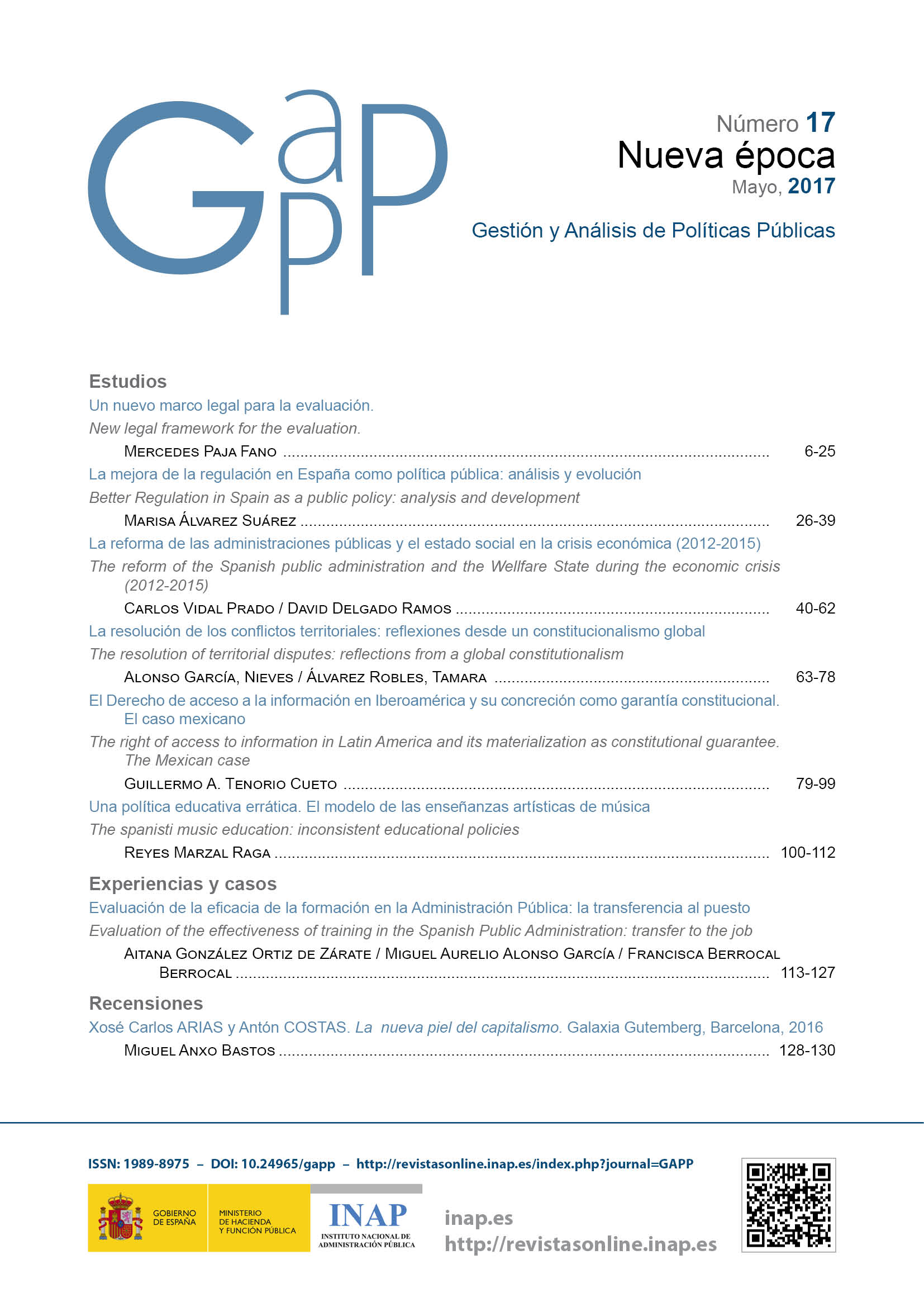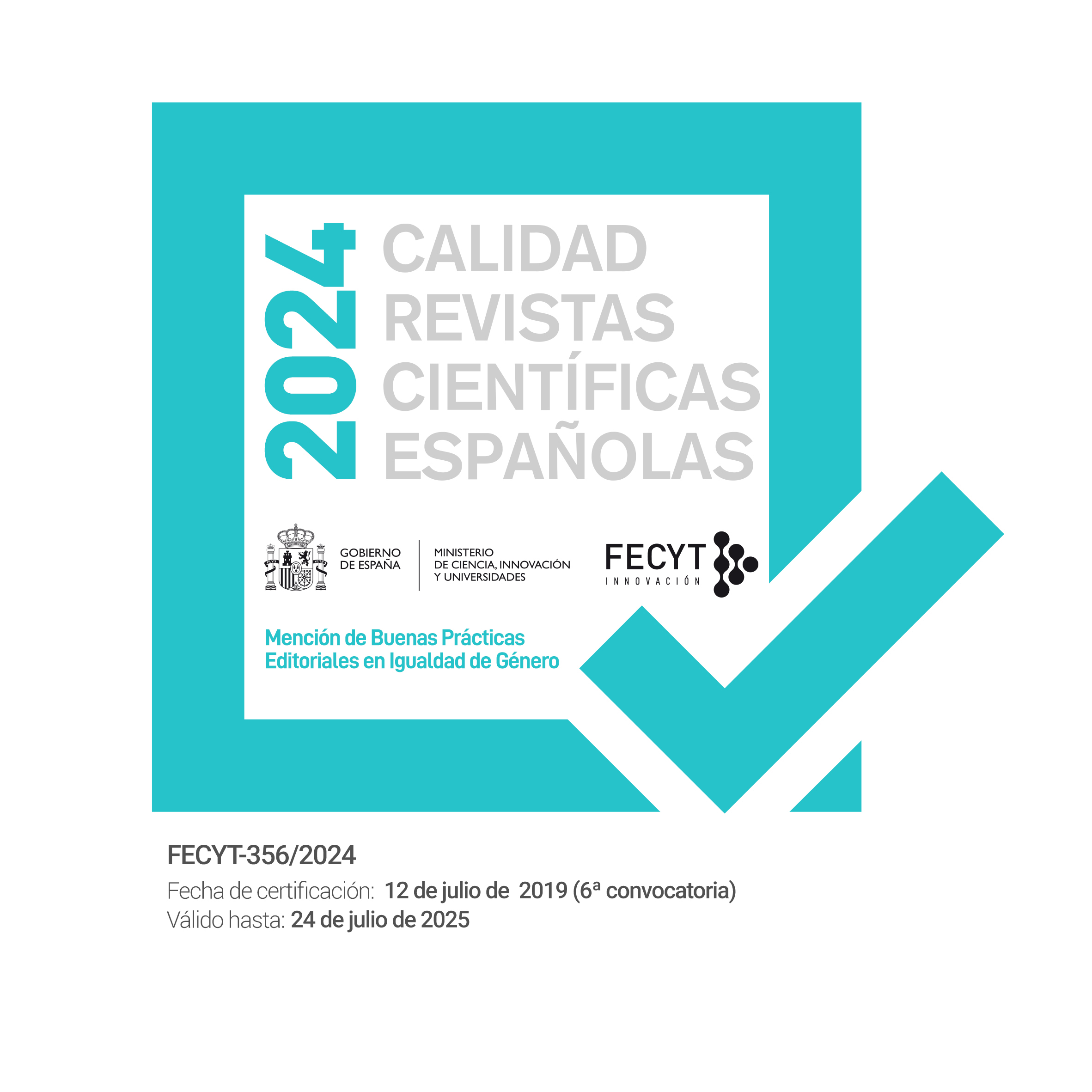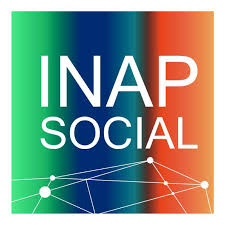Evaluación de la eficacia de la formación en la Administración Pública: la transferencia al puesto
DOI:
https://doi.org/10.24965/gapp.v0i17.10405Palabras clave:
Evaluación de la transferencia, evaluación de la formación, eficacia de la formaciónResumen
El artículo recoge los resultados de la evaluación de la transferencia de la formación en la Administración General del Estado con el fin de conocer los factores que en mayor medida influyen en que se produzca.
Se analizaron las respuestas de 1.475 participantes en 69 cursos desarrollados por el INAP (Instituto Nacional de la Administración Pública) durante el primer semestre de 2016. Se evaluó la transferencia directa con el Cuestionario de Eficacia de la Formación (CdE; Pineda, Quesada y Ciraso 2011) y la indirecta con el cuestionario de Factores de Eficacia de la Transferencia (FET; Pineda, Quesada y Ciraso, 2013).
Los resultados muestran que los factores de los participantes, del lugar de trabajo, la orientación a las necesidades del puesto y la generación de una red profesional tienen una relación positiva con la transferencia. Sin embargo la duración de la formación, el número de participantes y el número de profesores no presentan relación con la transferencia. El tiempo que el participante tarda en aplicar lo aprendido se relaciona inversamente con la transferencia.
La dimensión más relevante de cara a predecir la transferencia es la orientación a las necesidades del puesto.
Descargas
Citas
ALLIGER, G. M., TANNENBAUM, S. I., BENNETT, W., TRAVER, H. y SHOTLAND, A. (1997). “A meta-analysis of the relations among training criteria”, Personnel psychology, 50(2), 341-358. DOI: 10.1111/j.1744-6570.1997.tb00911.x.
ALONSO, M. A., BERROCAL, F., GONZÁLEZ-ORTIZ, A. y CENTOLOSI, B. (2017). Evaluación de la eficacia de la formación en la Administración Pública: la transferencia al puesto. Madrid: INAP.
ARTHUR, W., BENNETT, J. B., STANUSH, P. L. y MCNELLY, T. L. (1998). “Factors that influence skill decay and retention: A quantitative review and meta-analysis”, Human Performance, 11(1), 57-101. DOI: 10.1207/s15327043hup1101_3.
AUSTIN, M. J., WEISNER, S., SCHRANDT, E., GLEZOS-BELL, S., y MURTAZA, N. (2006). “Exploring the transfer of learning from an executive development program for human services managers”. Administration in Social Work, 30(2), 71-90. DOI: 10.1300%2FJ147v30n02_06.
AWONIYI, E. A., GRIEGO, O. V. y MORGAN, G. A. (2002). “Person-environment fit and transfer of training”, International Journal of Training and Development, 6(1), 25-35. DOI: 10.1111/1468-2419.00147.
AXTELL, C. M., MAITLIS, S. y YEARTA, S. K. (1997). “Predicting immediate and longer-term transfer of training”, Personnel Review, 26(3), 201-213. DOI: 10.1108/00483489710161413.
BALDWIN, T. T. y FORD, J. K. (1988). “Transfer of training: A review and directions for future research”, Personnel Psychology, 41, 63-105. DOI: 10.1111/j.1744-6570.1988.tb00632.x.
BATES, R. A., KAUFFELD, S. y HOLTON, E. F. (2007). “Examining the factor structure and predictive ability of the german-version of the learning transfer system inventory”, Journal of European Industrial Training, 31(3), 195-211. DOI: 10.1108/03090590710739278.
BLUME, B. D., FORD, J. K., BALDWIN, T. T. y HUANG, J. L. (2010). “Transfer of Training: A Meta-Analytic Review”, Journal of Management, 36(4), 1065-1105. DOI: 10.1177/0149206309352880.
BRINKERHOFF, R. O. (2006). “Increasing impact of training investments: an evaluation strategy for building organizational learning capability”. Industrial and Commercial Training, 38(6), 302-307. DOI: 10.1108/00197850610685824.
BOUD, D. y MIDDLETON, H. (2003). “Learning from others at work: communities of practice and informal learning”, Journal of Workplace Learning, 15(5), 194-202. DOI: 10.1108/13665620310483895.
BROAD, M. L. (2005). Beyond transfer of training: Engaging systems to improve performance. San Francisco: John Wiley & Sons.
BURKE, L. A. y BALDWIN, T. T. (1999). “Workforce training transfer: A study of the effect of relapse prevention training and transfer climate”, Human Resource Management, 38(3), 227-241. DOI: 10.1002/(SICI)1099-050X(199923)38:3<227::AID-HRM5>3.0.CO;2-M.
BURKE, L. A. y HUTCHINS, H. M. (2008). “A study of best practices in training transfer and proposed model of transfer”, Human Resource Development Quarterly, 19(2), 107-128. DOI: 10.1002/hrdq.1230.
CABRERA, F. A. (1993). “La evaluación en las sesiones instructivas”. En F. CABRERA, T. DONOSO, y M. A. MARÍN (Eds.), Manual de formación pedagógica básica para formadores (pp. 215-263). Barcelona: PPU.
CHEN, J. y SILVERTHORNE, C. (2008). “The impact of locus of control on job stress, job performance and job satisfaction in Taiwan”, Leadership & Organization Development Journal, 29(7), 572-582. DOI: 10.1108/01437730810906326.
CHENG, E. W. L. y HO, D. C. K. (2001). “A review of transfer of training studies in the past decade”, Personnel Review, 30(1), 102-118. DOI: 10.1108/00483480110380163.
CHIABURU, D. S. y LINDSAY, D. R. (2008). “Can do or will do? The importance of self-efficacy and instrumentality for training transfer” Human Resource Development International, 11(2), 199-206. DOI: 10.1080/13678860801933004.
CHIABURU, D. S. y MARINOVA, S. V. (2005). “What predicts skill transfer? An exploratory study of goal orientation, training self-efficacy and organizational supports”, International Journal of Training and Development, 9(2), 110-123. DOI: 10.1111/j.1468-2419.2005.00225.x.
CHIABURU, D. S., VAN DAM, K. y HUTCHINS, H. M. (2010). “Social Support in the Workplace and Training Transfer: A longitudinal analysis”, International Journal of Selection and Assessment, 18(2), 187-200. DOI: 10.1111/j.1468-2389.2010.00500.x.
CIRASO, A., ESPONA, B., QUESADA, C., VALDIVIA, P. y PINEDA, P. (2016). “MEEL: Modelo de Evaluación del eLearning en la administración pública”, Gestión y Análisis de Políticas Públicas, 15. Recuperado de http://revistasonline.inap.es/index.php?journal=GAPP&page=article&op=view&path%5B%5D=10315&path%5B%5D=10879.
CLARKE, N. (2002). “Job/work environment factors influencing training effectiveness within a human service agency: Some indicative support for Baldwin and Fords’ transfer climate construct”. International Journal of Training and Development, 6(3), 146-162. DOI: 10.1111/1468-2419.00156.
COLQUITT, J. A., LEPINE, J. A. y NOE, R. A. (2000). “Toward an integrative theory of training motivation: A meta-analytic path analysis of 20 years of research”. Journal of Applied Psychology, 85(5), 678-707. DOI: 10.1037/0021-9010.85.5.678.
CROMWELL, S. E. y KOLB, J. A. (2004). “An examination of work-environment support factors affecting transfer of supervisory skills training to the workplace”. Human Resource Development Quarterly, 15(4), 449-471. DOI: 10.1002/hrdq.1115.
DEVOS, C., DUMAY, X., BONAMI, M., BATES, R. y HOLTON, E. (2007). “The Learning Transfer System Inventory (LTSI) translated into French: internal structure and predictive validity”. International Journal of Training and Development, 11(3), 181-199. DOI: 10.1111/j.1468-2419.2007.00280.x.
FORD, J. K., QUIÑONES, M. A., SEGO, D. J. y SORRA, J. S. (2006). “Factors Affecting The Opportunity To Perform Trained Tasks On The Job”, Personnel Psychology, 45(3), 511-527. DOI: 10.1111/j.1744-6570.1992.tb00858.x.
FOXON, M. (2008). “The Influence of Motivation to Transfer, Action Planning, and Manager Support on the Transfer Process”, Performance Improvement Quarterly, 10(2), 42-63. DOI: 10.1111/j.1937-8327.1997.tb00048.x.
FOXON, M. y FOXON, M. (1987). “Transfer of Training – A Practical Application”, Journal of European Industrial Training, 11(3), 17-20. DOI: 10.1108/eb002223.
GILPIN-JACKSON, Y. y BUSHE, G. R. (2007). “Leadership development training transfer: a case study of post-training determinants”, Journal of Management Development, 26(10), 980-1004. DOI: 10.1108/02621710710833423.
GROSSMAN, R. y SALAS, E. (2011). “The transfer of training: what really matters”, International Journal of Training and Development, 15(2), 103-120. DOI: 10.1111/j.1468-2419.2011.00373.x.
HAWLEY, J. D. y BARNARD, J. K. (2005). “Work Environment Characteristics and Implications for Training Transfer: A Case Study of the Nuclear Power Industry”, Human Resource Development International, 8(1), 65-80. DOI: 10.1080/1367886042000338308.
HOLLENBECK, G. P. y INGOLS, C. A. (1990). “What’s the takeaway?”, Training & Development Journal, 44(7), 83-85.
HOLTON, E. F. (1996). “Final word: Response to reaction to Holton article”, Human Resource Development Quarterly, 7(1), 27-29. DOI: 10.1002/hrdq.3920070105.
HOLTON, E. F. (2005). “Holton´s evaluation model: New evidence and construct elaborations”, Advances in Developing Human Resources, 7(1), 37-54. DOI: 10.1177/1523422304272080.
HOLTON, E. F., BATES, R. A. y RUONA, W. E. A. (2000). “Development of a generalied learning transfer system inventory”, Human Resource Development Quartely, núm. 11(4), pag. 333-360. DOI: 10.1002/1532-1096(200024)11:4<333::AID-HRDQ2>3.0.CO;2-P.
HUGHES, A. (2016). “A Meta-Analytic Integration of What Matters in Training Transfer”, PhD Thesis, University of Central Florida. Electronic Theses and Dissertations. 4972. http://stars.library.ucf.edu/etd/4972.
INGVARSON, L., MEIERS, M. y BEAVIS, A. (2005). “Factors affecting the impact of professional development programs on teachers’ knowledge, practice, student outcomes & efficacy”, Professional development for teachers and school leaders, 1. DOI: 10.14507/epaa.v13n10.2005.
JUDGE, T. A. y BONO, J. E. (2001). “Relationship of core self-evaluations traits-self-esteem, generalized self-efficacy, locus of control, and emotional stability-with job satisfaction and job performance: A meta-analysis”, Journal of Applied Psychology, 86(1), 80-92. DOI: 10.1037/0021-9010.86.1.80.
KIRKPATRICK, D. L. (1959). “Techniques for evaluating training programs”, Journal of ASTD, 11, 1-13.
KONTOGHIORGHES, C. (2001). “Factors Affecting Training Effectiveness in the Context of the Introduction of New Technology-A US Case Study”, International Journal of Training and Development, 5(4), 248-260. DOI: 10.1111/1468-2419.00137.
KONTOGHIORGHES, C. (2004). “Reconceptualizing the learning transfer conceptual framework: empirical validation of a new systemic model”, International Journal of Training and Development, 8(3), 210-221. DOI: 10.1111/j.1360-3736.2004.00209.x.
KUMPIKAITE, V. (2007). “Human Resource Training Evaluation”. Engineering Economics 5 (55). https://www.ceeol.com/search/article-detail?id=293358.
LAMA, F. J. (2014). “Transferencia de la formación de empleados públicos. Elementos de intervención para el incremento de la transferencia del aprendizaje”, Tesis doctoral. Universidad de Sevilla.
LIM, D. H. y JOHNSON, S. D. (2002). “Trainee perceptions of factors that influence learning transfer”, International Journal of Training and Development, 6(1), 36-48. DOI: 10.1111/1468-2419.00148.
LONGENECKER, C. O. (2004). “Feature articles maximizing transfer of learning from management education programs”, Development and Learning in Organizations: An International Journal, 18(4), 4-6. DOI: 10.1108/14777280410544538.
MACHIN, M. A. y FOGARTY, G. J. (2004). “Assessing the antecedents of transfer intentions in a training context”, International Journal of Training and Development, 8(3), 222-236. DOI: 10.1111/j.1360-3736.2004.00210.x.
MARTIN, H. J. (2010). “Workplace climate and peer support as determinants of training transfer”, Human Resource Development Quarterly, 21(1), 87-104. DOI: 10.1002/hrdq.20038.
MATHIEU, J. E., TANNENBAUM, S. I. y SALAS, E. (1992). “Influences of individual and situational characteristics on measures of training effectiveness”, Academy of Management Journal, 35(4), 828-847. DOI: 10.2307/256317.
NIJMAN, D. J. M., NIJHOF, W. J., WOGNUM, A. A. M. (Ida) y VELDKAMP, B. P. (2006). “Exploring differential effects of supervisor support on transfer of training”, Journal of European Industrial Training, 30(7), 529-549. DOI: 10.1108/03090590610704394.
NOE, R. A. (1986). “Trainees’ attributes and attitudes: Neglected influences on training effectiveness”, Academy of management review, 11(4), 736-749. DOI: 10.5465/AMR.1986.4283922.
PAAS, F. G. W. C. y VAN MERRIËNBOER, J. J. G. (1994). “Variability of worked examples and transfer of geometrical problem-solving skills: A cognitive-load approach”, Journal of Educational Psychology, 86(1), 122-133. DOI: 10.1037/0022-0663.86.1.122.
PEREDA, S., BERROCAL, F. y ALONSO, M. A. (2014). “Bases de Psicología del Trabajo para Gestión de Recursos Humanos”. Madrid: Síntesis.
PÉREZ, D. P. D. S. (2008). “La formación como proceso de transferencia al puesto de trabajo de los conocimientos aprendidos: un modelo explicativo aplicado al sector de la restauración”, Tesis doctoral, Universidad de las Palmas de Gran Canaria.
PINEDA, P. (2000). “Evaluación del impacto de la formación en las organizaciones”. Educar, (27), 119-133.
PINEDA, P. (2002) (Coord). “Evaluación de la formación en las organizaciones”, Gestión de la Formación en las Organizaciones. Barcelona: Ariel.
PINEDA, P., CIRASO, A. y QUESADA, C. (2014). “¿Cómo saber si la formación genera resultados? El modelo FET de evaluación de la transferencia”, Capital Humano, 292, 74-80. https://dialnet.unirioja.es/servlet/articulo?codigo=4869068.
PINEDA, P., QUESADA, C. y CIRASO, A. (2011). “Evaluating Training Effectiveness: results of the FET Model in the Public Administration in Spain”, Paper presented at the 7th International Conference on Researching Work and Learning (Shanghai, Dec 4-7, 2011).
PINEDA, P., QUESADA, C. y CIRASO, A. (2013). “Evaluation of Training Transfer Factors: The FET Model”, Transfer of Learning in Organizations, 121-144. DOI: 10.1007/978-3-319-02093-8_8.
PINEDA, P., QUESADA, C., ESPONA, B., CIRASO, A. y GARCÍA, N. (2012). “Evaluación de la eficacia de la formación en la administración pública española –ETAPE–: el modelo FET”. Recuperado de https://ddd.uab.cat/pub/estudis/2012/115524/evaefifor_a2012.pdf.
PINEDA, P., QUESADA, C., y MORENO, M. V. (2011). Avaluació de la transferència de la formació a l’Administració Pública de Catalunya, Barcelona: Escola d’Administració Pública de Catalunya. ISBN 978-84-393-8664-3. https://ddd.uab.cat/record/55238.
QUESADA, C. (2014). “¿Se puede predecir la transferencia de los aprendizajes al lugar de trabajo?: Validación del modelo de predicción de la transferencia”, Tesis doctoral. Universidad Autónoma de Barcelona. https://ddd.uab.cat/record/127052.
RENTA-DAVIDS, A. I., JIMÉNEZ-GONZÁLEZ, J. M., FANDOS-GARRIDO, M. y GONZÁLEZ-SOTO, Á. P. (2014). “Transfer of learning: Motivation, training design and learning-conducive work effects”, European Journal of Training and Development, 38(8), 728-744. DOI: http://dx.doi.org/10.1108/EJTD-03-2014-0026.
RODRIGUEZ, C. M. (2005). “Qualitative Study of Transfer of Training of Student Employees in a Service Industry”, Journal of Hospitality & Tourism Research, 29(1), 42-66. DOI: 10.1177/1096348004270753.
ROUILLER, J. Z. y GOLDSTEIN, I. L. (1993). “The relationship between organizational transfer climate and positive transfer of training”, Human Resource Development Quarterly, 4(4), 377-390. DOI: 10.1002/hrdq.3920040408.
RUSS-EFT, D. (2002). “A Typology of Training Design and Work Environment Factors Affecting Workplace Learning and Transfer”, Human Resource Development Review, 1(1), 45-65. DOI: 10.1177/1534484302011003.
SAKS, A. M. (n.d.). “So what is a good transfer of training estimate? A reply to Fitzpatrick”, PsycEXTRA Dataset. DOI: 10.1037/e576922011-004.
SAKS, A. M. y BELCOURT, M. (2006). “An investigation of training activities and transfer of training in organizations”, Human Resource Management, 45(4), 629-648. DOI: 10.1002/hrm.20135.
SALAS, E. y STAGL, K. C. (2015). “Design Training Systematically and Follow the Science of Training”, Handbook of Principles of Organizational Behavior, 57-84. DOI: 10.1002/9781119206422.ch4.
SALAS, E., TANNENBAUM, S. I., KRAIGER, K. y SMITH-JENTSCH, K. A. (2012). “The Science of Training and Development in Organizations”, Psychological Science in the Public Interest, 13(2), 74-101. DOI: 10.1177/1529100612436661.
SANDUVETE, S. (2008). “Innovaciones metodológicas en la evaluación de la formación continua”. Tesis doctoral. Universidad de Sevilla.
SCHINDLER, L. A. y BURKHOLDER, G. J. (2016). “A Mixed Methods Examination of the Influence of Dimensions of Support on Training Transfer”, Journal of Mixed Methods Research, 10(3), 292-310. DOI: 10.1177/1558689814557132.
SIASSAKOS, D., FOX, R., CROFTS, J. F., HUNT, L. P., WINTER, C. y DRAYCOTT, T. J. (2011). “The management of a simulated emergency: Better teamwork, better performance”, Resuscitation, 82(2), 203-206. DOI: 10.1016/j.resuscitation.2010.10.029.
THAYER, P. W. y TEACHOUT, M. S. (1995). “A Climate for Transfer Model (No. AL/HR-TP-1995-0035). ARMSTRONG LAB BROOKS AFB TX HUMAN RESOURCES DIRECTORATE.
TZINER, A. y FALBE, C. M. (1993). “Training-Related Variables, Gender and Training Outcomes: A Field Investigation”, International Journal of Psychology, 28(2), 203-221. DOI: 10.1080/00207599308247185.
VALENCIA-RODRÍGUEZ, M. (2013). “Generación y transferencia de conocimiento”, Ingeniería industrial, 34(2), 178-187. Disponible en: <http://scielo.sld.cu/scielo.php?script=sci_arttext&pid=S1815-59362013000200007&lng=es&nrm=iso>. ISSN 1815-5936.
VAN DEN BOSSCHE, P., SEGERS, M. y JANSEN, N. (2010). “Transfer of training: the role of feedback in supportive social networks”, International Journal of Training and Development, 14(2), 81-94. DOI: 10.1111/j.1468-2419.2010.00343.x.
VAN DER KLINK, M., GIELEN, E. y NAUTA, C. (2001). “Supervisory support as a major condition to enhance transfer”, International Journal of Training and Development, 5(1), 52-63. DOI: 10.1111/1468-2419.00121.
VELADA, R. y CAETANO, A. (2007). “Training transfer: the mediating role of perception of learning”, Journal of European Industrial Training, 31(4), 283-296. DOI: 10.1108/03090590710746441.
VELADA, R., CAETANO, A., MICHEL, J. W., LYONS, B. D. y KAVANAGH, M. J. (2007). “The effects of training design, individual characteristics and work environment on transfer of training”, International Journal of Training and Development, 11(4), 282-294. DOI: 10.1111/j.1468-2419.2007.00286.x.
WARR, P. y BUNCE, D. (1995). “Trainee characteristics and the outcomes of open learning”, Personnel Psychology, 48(2), 347-375. DOI: 10.1111/J.1744-6570.1995.Tb01761.X.












